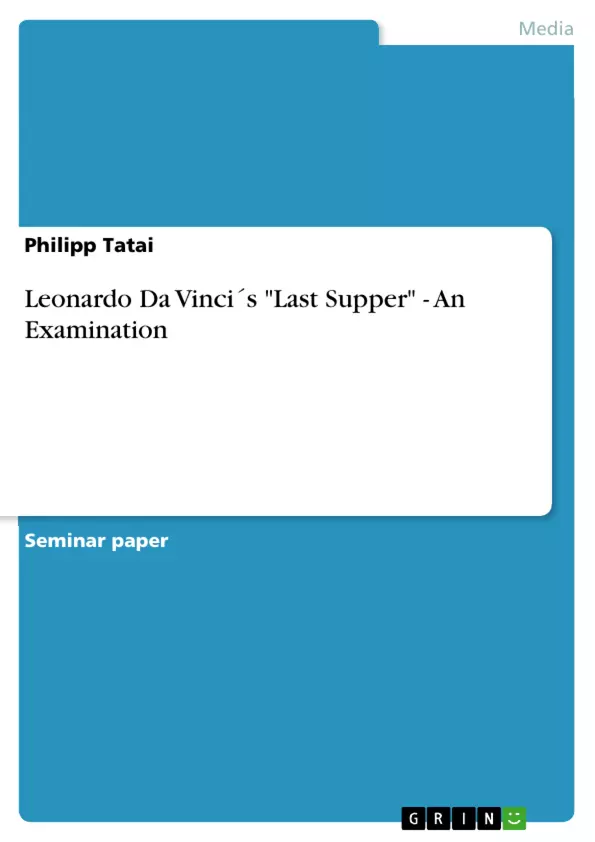Besides biographical information, this term paper will give insight on the different and important steps Leonardo had undergone during his career, for example his apprenticeship in the studio of Andrea del Verrocchio and his first ink perpetuation.
The main part of this thesis examines the fresco of Leonardo Da Vinci itself, giving
short insight on the evolutionary history. Also discussed in the main part is the design of The Last Supper with special regard to the scenery of the foreground, middle ground and background. Furthermore, the main part will provide a detailed description of the fresco regarding its arrangement, spatial scope, color ranges as well
as the apostles depicted in the Last Supper.
The last part will scrutinize how the setting and the gestures of each apostle as well as Jesus could be interpreted with regard to the biblical background and the implementation of Goethes’ point of view after seeing this piece of art as he traveled from Rome back to Germany.
Inhaltsverzeichnis (Table of Contents)
- Introduction
- Biographical background
- Biography
- Influences on Leonardo da Vinci as a draftsman
Zielsetzung und Themenschwerpunkte (Objectives and Key Themes)
This paper examines the famous artwork "The Last Supper" by Leonardo da Vinci, providing a comprehensive analysis of its creation and artistic significance. It explores Leonardo's biographical background, focusing on his artistic development and influences, particularly during his apprenticeship with Andrea del Verrocchio. The main emphasis is on the fresco itself, examining its design, arrangement, spatial scope, color ranges, and the depictions of the apostles. Additionally, the paper explores the interpretation of the setting and gestures of the apostles and Jesus, considering biblical context and Goethe's perspective.
- Leonardo da Vinci's artistic development and influences
- The creation and design of "The Last Supper"
- Detailed analysis of the fresco's arrangement, spatial scope, and color ranges
- Interpretation of the setting and gestures of the apostles and Jesus
- Influence of biblical context and Goethe's perspective on "The Last Supper"
Zusammenfassung der Kapitel (Chapter Summaries)
The Introduction provides an overview of Leonardo da Vinci's legacy as a Renaissance genius, highlighting his contributions to art, science, and philosophy. The paper focuses on the analysis of "The Last Supper", a pivotal work in Leonardo's artistic career.
The chapter on biographical background delves into Leonardo da Vinci's life, from his birth in Vinci, Tuscany, to his apprenticeship with Andrea del Verrocchio and his subsequent artistic career. It highlights key influences on his artistic development and the emergence of his unique style.
Schlüsselwörter (Keywords)
Leonardo da Vinci, Renaissance, "The Last Supper", fresco, art analysis, design, arrangement, spatial scope, color ranges, apostles, Jesus, biblical context, Goethe, Andrea del Verrocchio, apprenticeship, artistic development, influences.
- Quote paper
- Philipp Tatai (Author), 2009, Leonardo Da Vinci´s "Last Supper" - An Examination, Munich, GRIN Verlag, https://www.grin.com/document/181752



